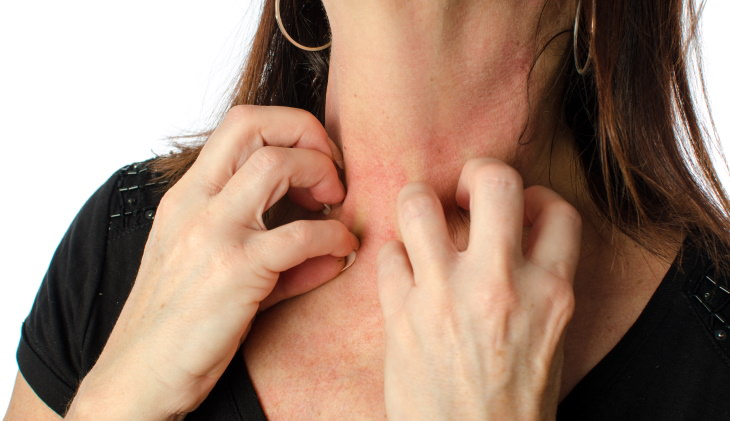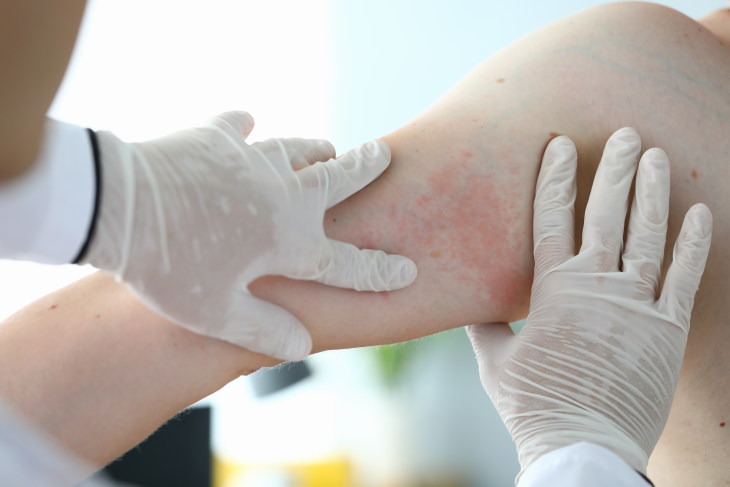Could Stress Make You Break Out in Hives?
Have you ever got a sudden and inexplicable
allergic skin reaction when you were amid an extremely challenging and
stressful situation (or right after one)? If so, you might have not been
allergic at all, and what you had really experienced was a stress rash.
Yes, it’s true, a stressful day can truly make some people break out in
hives anywhere in your body, and distinguishing this rash from an
allergic reaction or a series of bug bites can be very difficult. Below,
we discuss the specifics of this little-known skin reaction.
What Is a Stress Rash?


Although most of us find it difficult to
conceptualize that an emotional state like stress could have a physical
manifestation in our body, doctors have known for a while that stress
can have an immediate effect on several bodily functions, suppressing
our digestion, concentration, and sleep, and increasing blood pressure,
to name just a few.
However, most people don’t know that
high-stress situations can also make you break out in hives, which are
known as a stress rash. This rash can appear anywhere, and it can look
like a halo, a series of bug bites, or an allergic skin reaction. The
bumps or welts that appear on the skin will likely be itchy and raised,
and some people can even have burning or tingling sensations in the
affected area.
Stress can also worsen chronic skin issues like psoriasis, rosacea, and
eczema. Most people can develop a stress rash, but women are more
susceptible to a stress rash, and so are people in the age range between
30-50 years old.
How Does One Treat a Stress Rash? 

In most cases, a stress rash is not a cause
of medical concern, although it can affect your self-esteem and be the
cause of further stress. Since a stress rash can be difficult to
distinguish from an allergic reaction and other skin conditions, a
common indication by medical professionals is the application of topical
allergy medication on the affected area or taking an over-the-counter
antihistamine pill like:
Loratadine (Claritin)
Cetirizine (Zyrtec)
Diphenhydramine (Benadryl).
You can also apply cold compresses on the area to find some relief from
the itching and swelling. In addition, try to address the initial cause
of the rash - stress, by engaging in relaxing and soothing activities,
getting enough quality sleep, and engaging in mental relaxation
techniques.


The hives should disappear on their own
within 24 hours, but some people who experience extreme and constant
stress can observe these symptoms for longer. Rarely, the condition can
persist for 6 weeks or more, in which case you should seek medical help
and will likely require additional treatments and checkups to rule out
other health conditions.
You should also see a doctor if you see that your symptoms are getting
worse, meaning that the rash is spreading, the hives grow and become
angrier, you have a fever or experience pain in the area.
How to Prevent a Stress Rash
As may expect, the only way you can truly prevent the stress rash from
recurring in the future is to reduce your overall stress levels. After
all, a stress rash is your body's way of telling you that it's under too
much mental pressure. We understand that it's easier said than done,
and more often than not, it's impossible to just stop stressing out
altogether since stress is a subconscious reaction to events in our
lives.
That being said, a significant reduction of stress is an achievable goal
for most people. Here are some science-backed stress-relieving tips and
resources to consider:
Exercise regularly, as it has been found that physical activity
significantly decreases both stress levels and the level of inflammation
in the body.
Get plenty of sleep because it has been found that people who don’t
sleep enough are significantly more stressed than those who do.
Find the best stress-relieving technique for you, be it engaging in a
hobby, meditation, psychotherapy, or spending time in nature. Even a
simple mental exercise like mindful walking was found to have pretty
amazing stress-relieving benefits.